Scottish-born artist Jo Hamilton currently lives and works in Portland, Oregon. She graduated from the Glasgow School of Art with a degree in drawing and painting before moving to the United States. Jo’s large scale work uses knotted yarn to crochet portraits, cityscapes, giant male nudes and mysterious masked women.
In our interview with Jo we learn more about ‘painting with yarn’, she explains why her studio is surrounded by colour and tells us about the challenges of re-examining traditional fine art subjects.
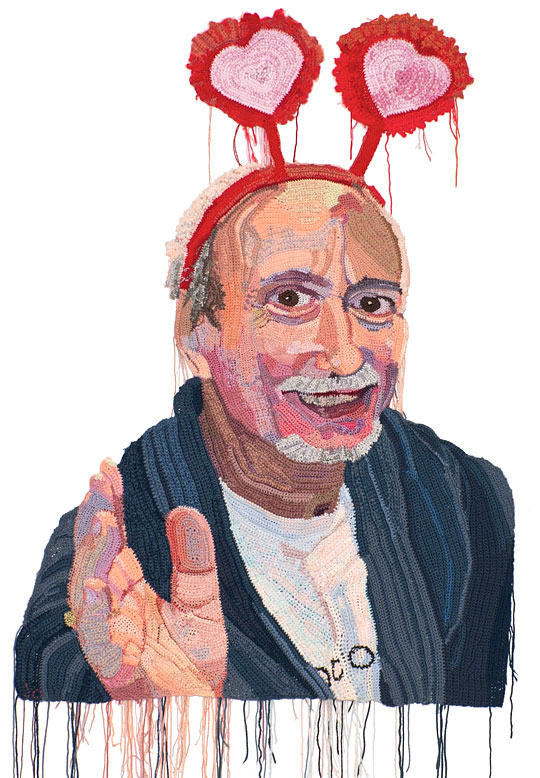
Colour, making and representation
TextileArtist.org: What initially captured your imagination about textile art?
Jo Hamilton: I grew up in a family of knitters and crocheters, so I was very familiar with yarn crafts from a young age. I have always had a love of colour, making and representation and I have a respect for art that reveals how it is made.
What or who were your early influences and how has your life/upbringing influenced your work?
My Mum and my Gran both knitted and crocheted and I learned both when I was quite young, about 6. I took up crochet again as a teenager and used it to make presents for friends.
What was your route to becoming an artist? (Formal training or another pathway?)
I went to Glasgow School of Art at the age of seventeen, graduating four years later. Although I studied drawing and painting there, after art school I was still searching for my ideal and undiscovered medium. It took me years to learn how best to marry my traditional craft and fine art backgrounds. I continued to draw and paint for years and then eventually the crochet took precedence.

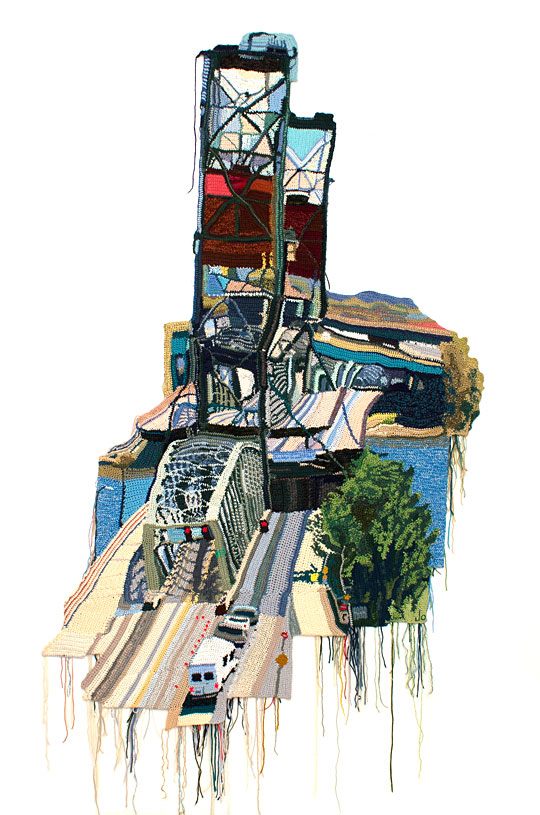
Trial and error
What is your chosen medium and what are your techniques?
My chosen medium is crochet. My technique is to work directly from a photograph, usually beginning in the middle and working out until it is finished. I don’t use any graphs, patterns or sketches, I just eyeball it. There is a lot of trial and error; I can test out many different colours until I am satisfied, and there is also a lot of ripping out and redoing. Each piece takes many hours of work.
How would you describe your work and where do you think it fits within the sphere of contemporary art?
My work could be described as ‘painting with yarn’, but that makes it sound much simpler than it is. In the last ten years there has been a resurgence of craft-based fine art in the US, the UK and Europe.
Tell us a bit about your process and what environment you like to work in?
When I start a piece I pull the colours of yarn that I’m going to use from the shelves that line my studio walls and lay them out on the futon where I work. As I get further into each piece I need to grab more and more and so by the time I’m finished I have a big pile of everything I’ve used; all the yarn that constitutes the palette for that particular piece. The walls of my studio are lined with shelves full of yarn, mostly found in thrift stores over the years, all arranged by colour and tone. It’s a very inspiring environment, surrounded by that much colour.
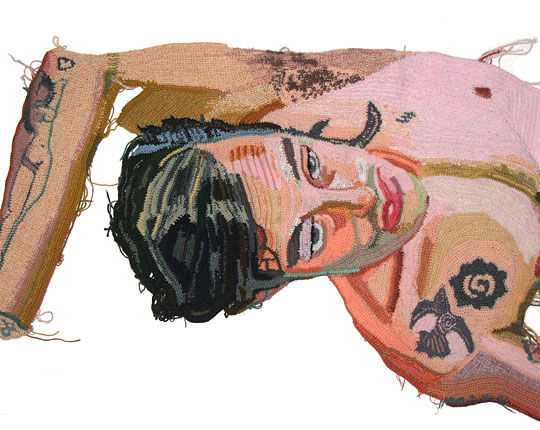
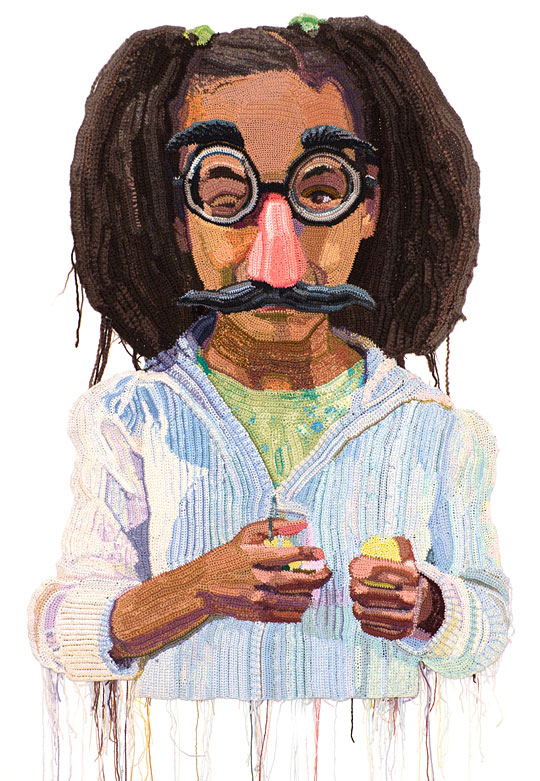
Going back to basics
Do you use a sketchbook?
I don’t do any kind of preparatory sketching or drawing for my crochet work, I just go straight into it. So my sketchbook is more like a journal or a planner; these days it has much more writing than drawing in it.
What currently inspires you and which other artists do you admire and why?
Right now I’m inspired very much by the work and life of Louise Bourgeois. I had been familiar with her sculptures, but recently I found an amazing book of all her work in fabric. I also love that her art career began in earnest when she was about 40, and continued for almost another 60 years. I also admire the work of Alice Neel, Howard Hodgkin, Matisse, Patrick Caulfield, among others.
How has your work developed since you began and how do you see it evolving in the future?
In a way when I began working with crochet in this way I felt like going back to basics a bit to see just what I could achieve. So I’ve been re-examining and revisiting some of the genres of traditional fine art- portraiture, landscape, nudes, and so on. The nudes especially were a self-imposed challenge; I felt that if I could that if I could convincingly render a nude in crocheted yarn, I would prove to myself that I could really crochet anything. I also couldn’t resist the contradictions and the humour inherent in such an undertaking; this towering reclining male nude composed of a profusion of soft and tiny knots, made from a medium and process usually associated with feminine domestic pastimes. I’ve now completed two realistic-ish males nudes, and dozens of portraits so I feel like my work may be heading towards abstraction. Not complete abstraction, but a certainly a distortion or exaggeration of representation, and maybe a bit of playfulness with pattern and materials.
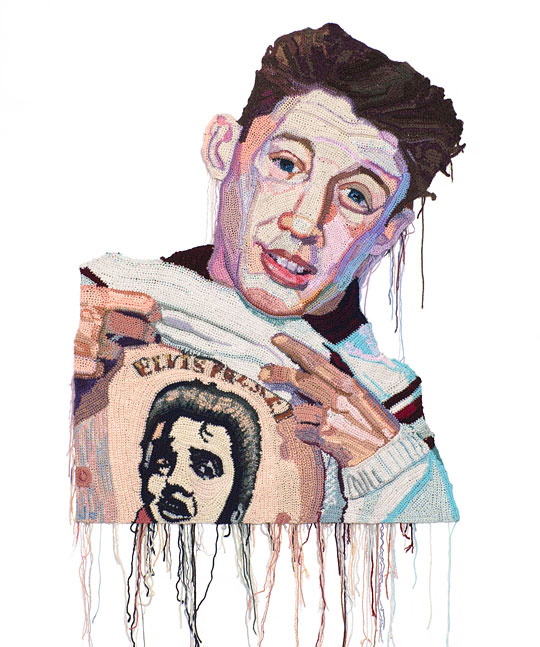
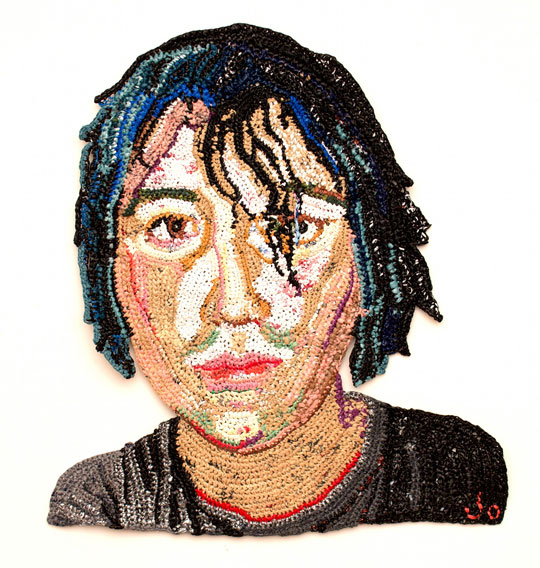
Advice and recommended resources
What advice would you give to an aspiring textile artist?
Don’t be afraid to experiment, you might discover something no-one else has done. Take note when you are inspired but things you see – the things you love to look at become a part of you and can later feed your work for years to come.
Can you recommend any books for textile artists?
Louise Bourgeois: The Fabric Works.
Textile Art Around the World, Ellen Bakker
My own art catalogue, available through my website!
What other resources do you use? Blogs, websites, magazines etc.
I’m not too much of a blog reader. But I use the public library quite a bit!
What piece of equipment or tool could you not live without?
A crochet hook .
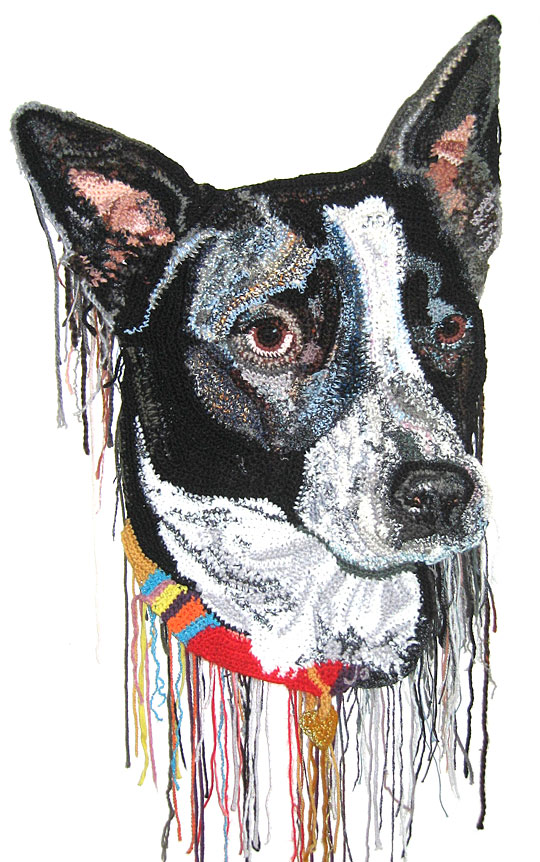
Talks, workshops and exhibitions
Do you give talks or run workshops or classes? If so where can readers find information about these?
I am starting to get requests for talks and workshops. I taught a workshop this June at Arrowmont School of Arts and Crafts in Tennessee. I post plenty of information on the News page of my website: www.johamiltonart.com
And I have a facebook page too, a bit less formal than the website: www.facebook.com/johamilton4rt
How do you go about choosing where to show your work?
I don’t always get to choose! I’ve had many exhibition opportunities come to me through my website, and I also apply for certain things through the Call For Entry website. For artists I produced a small catalogue for my first solo museum show that opened in March at the Jordan Schnitzer Museum of Art in Eugene, Oregon, and I hope be able to use that to introduce my work to some of my most coveted museums and galleries later this year.
Where can readers see your work this year?
I have a solo show in February 2015 at the Laura Russo Gallery in Portland, and a selection of portraits at Archer Gallery in Vancouver, WA this month.
For more information please visit: johamiltonart.com
If you’ve enjoyed this interview with Jo let us know by leaving a comment below
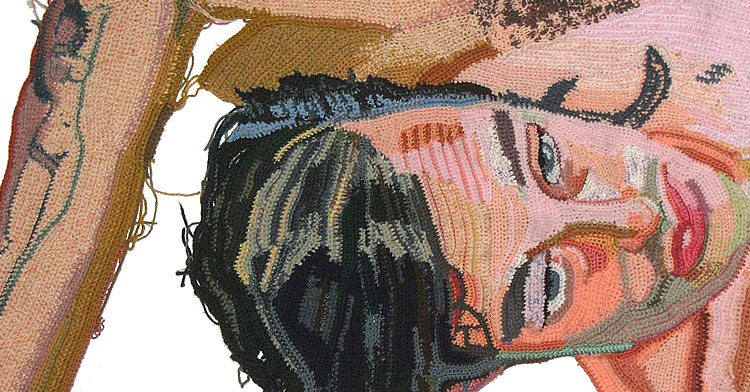

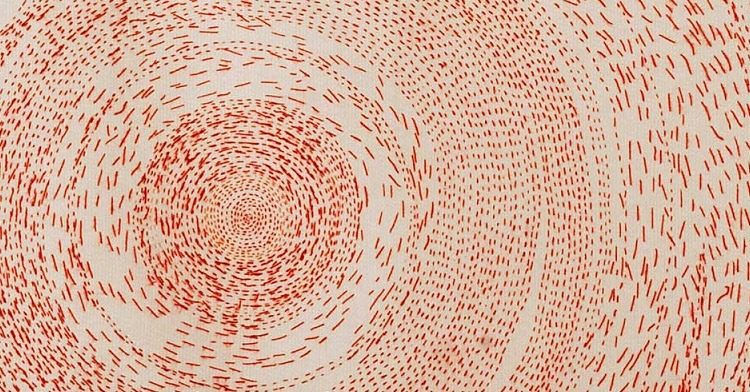
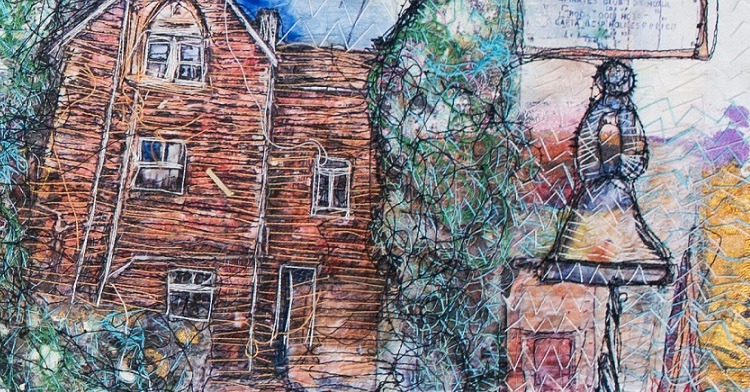
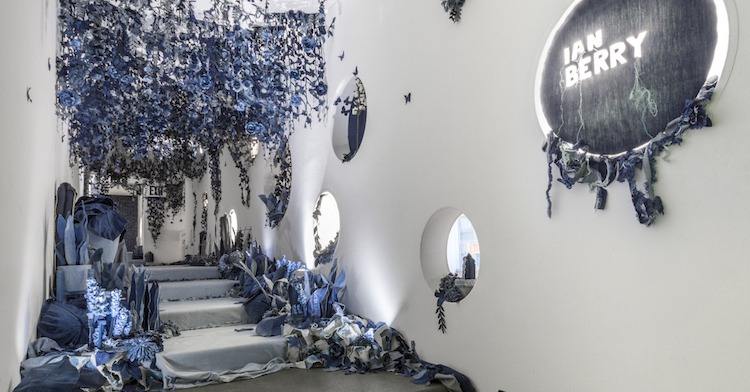
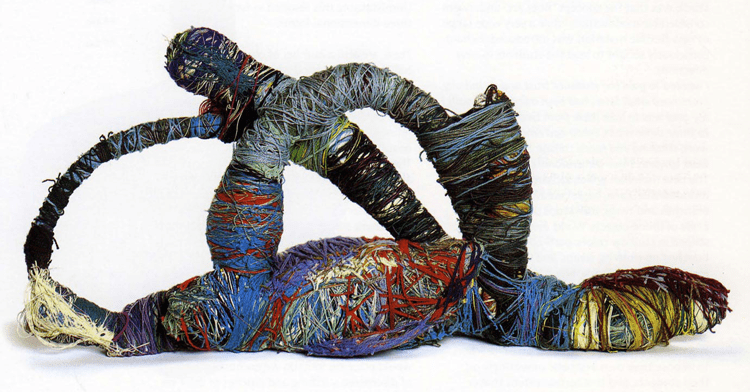
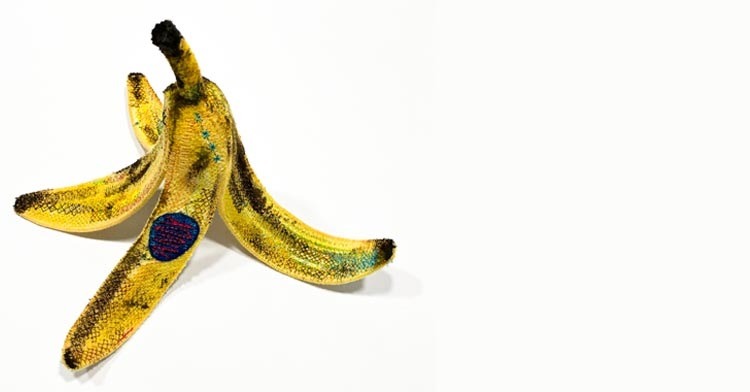
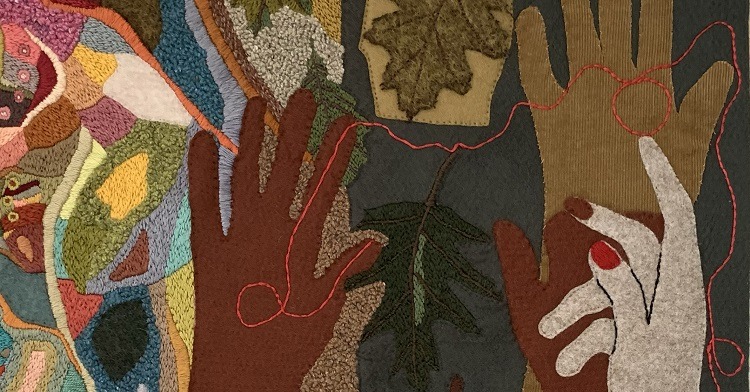
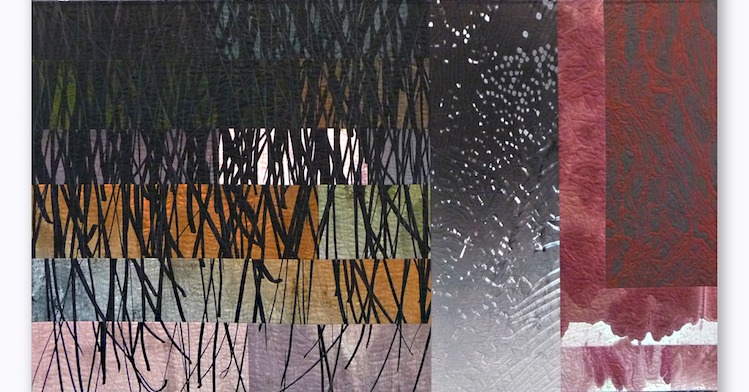
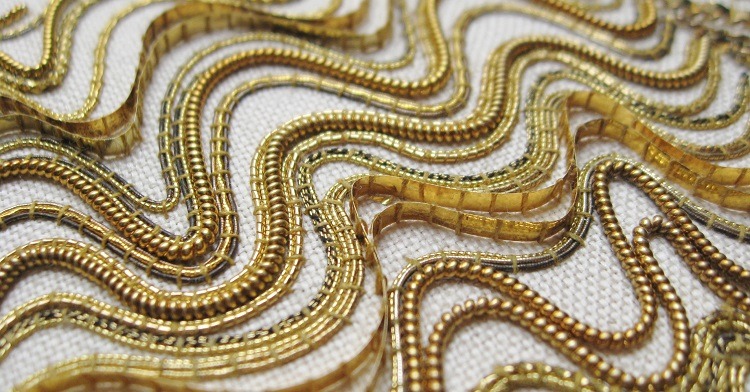
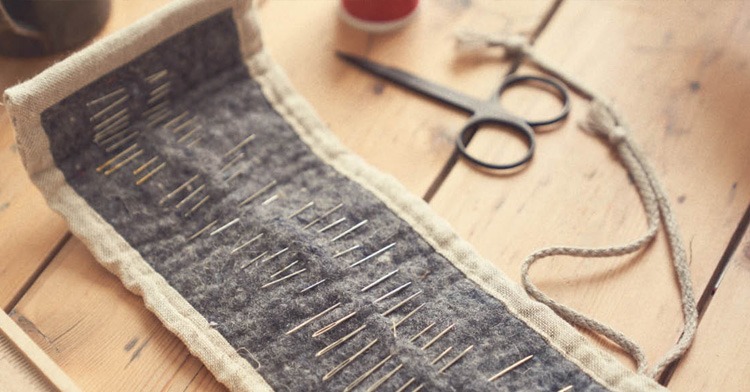
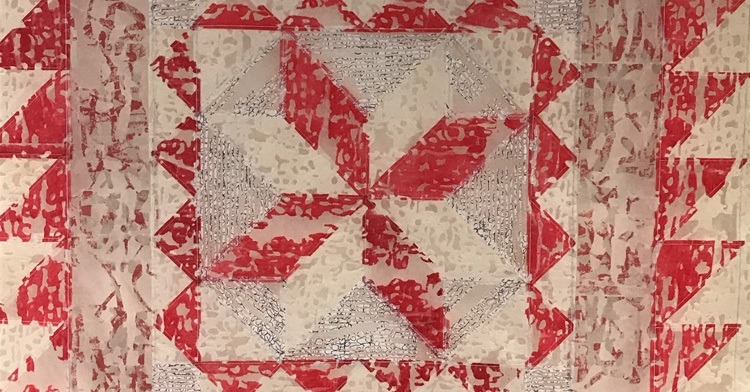
1 comment
Chris Lewis
Brilliant. I have never before seen any crochet work that I thought was inspiring. Yours has changed my mind.